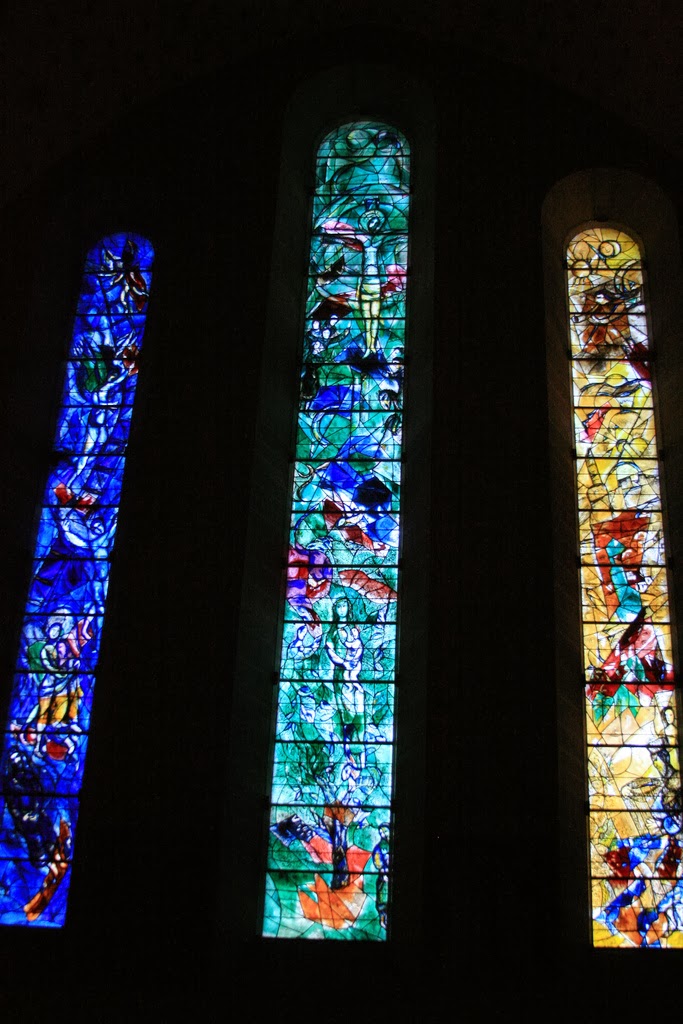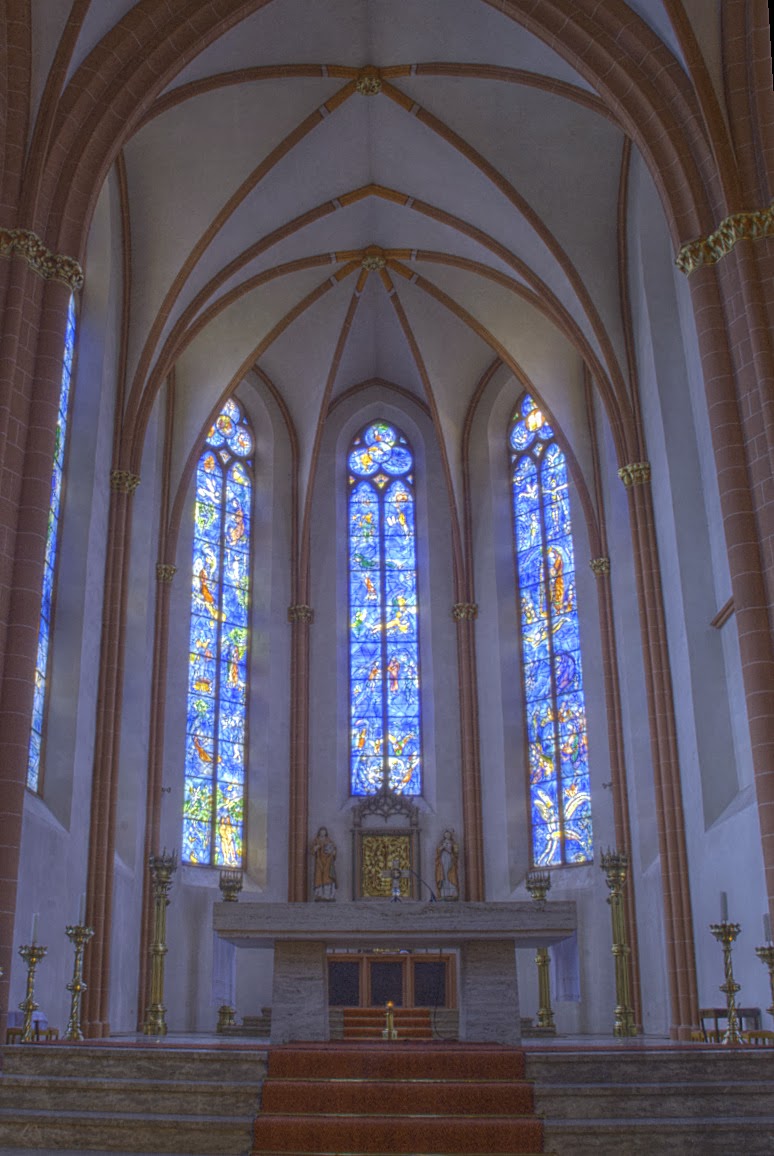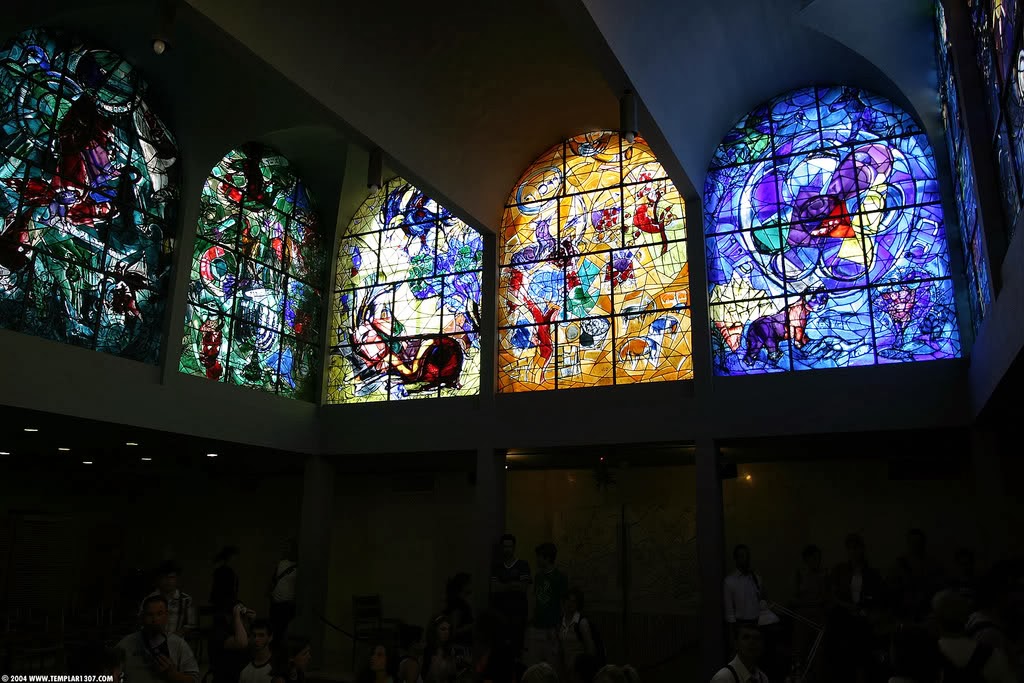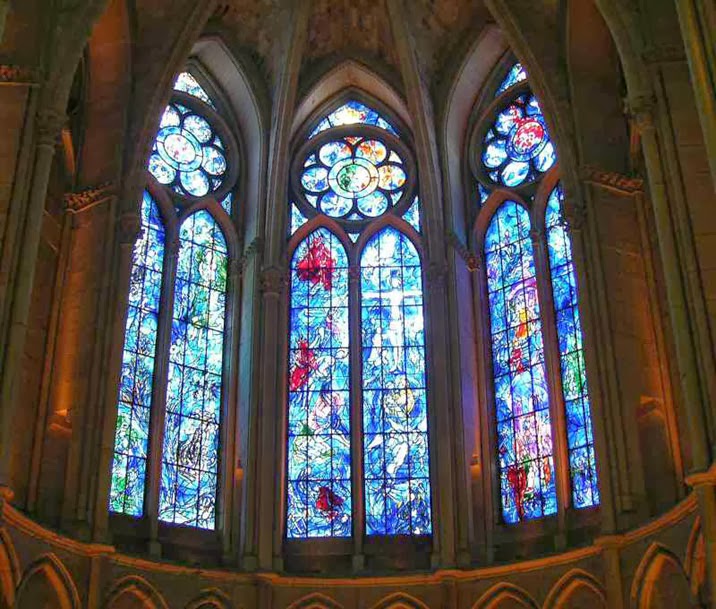Chagall’s Mysticism of Blue Light
"This is my modest gift to the Jewish people who have always dreamt of biblical love, friendship and of peace among all peoples. This is my gift to that people which lived here thousands of years ago among the other Semitic people." Marc Chagall, February 6, 1962
“When Matisse dies,” Pablo Picasso remarked in the 1950s, “Chagall will be the only painter left who understands what color really is."
“The
colors address our vital consciousness directly, because they tell of optimism,
hope and delight in life”, says Monsignor Klaus Mayer, who imparts Chagall’s
work in mediations and books.
Marc
Chagall (IPA: ʃʌ-ɡɑːl); [shuh-GAHL] (7
July 1887 – 28 March 1985), was
a Russian-Jewish artist, born in Belarus (then Russian Empire) and naturalized
French in 1937, associated with several key art movements and was one of the
most successful artists of the twentieth century.
Chagall
was considered to be “the last survivor of the first generation of European
modernists.” For decades he “had also been respected as the world’s preeminent
Jewish artist.”
He
also accepted many non-Jewish commissions, including a stained glass for the
cathedrals of Reims and Metz, a Dag Hammarskjöld memorial at the United
Nations, and the great ceiling mural in the Paris Opéra.
200,000
visitors a year visit St. Stephen’s church in Mainz, Germany. Tourists from the
whole world pilgrim up St. Stephen’s Mount, to the glowing blue stained glass
windows by the artist Marc Chagall. St. Stephen’s is the only German church for
which the Jewish artist Marc Chagall (1887 - 1985) created windows.
He
was known to have two basic reputations, writes Lewis - as a pioneer of
modernism, and as a major Jewish artist. He experienced modernism’s golden age
in Paris, where “he synthesized the art forms of Cubism, Symbolism, and
Fauvism, and the influence of Fauvism gave rise to Surrealism.”
Yet
throughout these phases of his style "he remained most emphatically a Jewish
artist, whose work was one long dreamy reverie of life in his native village of
Vitebsk.
The sun filters through the brilliant colors of the stained glass capturing their radiance. Even in the misty haze of a cloudy day, Chagall's genius transforms time and space.
The synagogue's Jerusalem stone floor and walls absorb this beauty and reflect it. Standing within the simple square that forms the pedestal for the windows, gazing up at the vivid imagery, the Jewish symbols, the floating figures of animals, fish and flowers, even the most casual viewer is overwhelmed by their power and presence.
Every pane is a microcosm of Chagall's world, real and imaginary; of his love for his people, his deep sense of identification with Jewish history, his early life in the Russian shtetl.
"All the time I was working, I felt my mother and father looking over my shoulder; and behind them were Jews, millions of other vanished Jews -- of yesterday and a thousand years ago," Chagall said.
The Bible was his primary inspiration, particularly Jacob's blessings on his twelve sons and Moses' blessings on the twelve tribes. Each window is dominated by a specific color and contains a quotation from the individual blessings.
Chagall and his assistant, Charles Marq, worked on the project for two years, during which time Marq developed a special process for applying color to the glass. This allowed Chagall to use as many as three colors on a single pane, rather than being confined to the traditional technique of separating each colored pane by a lead strip.
The synagogue was dedicated in the presence of the artist on February 6, 1962 as part of Hadassah's Golden Anniversary Celebration.
 |
 |
 |
 |
| Chagall windows Metz Cathedral |
 |
| Chagall Windows, Fraumunster, Zurich |
 |
| Chagall_Chichester |
 |
| Interior of St. Stephan in Mainz with the choir windows |
.jpg) |
| Chagall Windows - Hadassah Hospital (2) |
 |
| Windows representing the Tribes of Dan, Gad & Asher. |
 |
| Windows representing the Tribes of Judah, Zebulon & Issachar |
*original post date Sep 2 '09
hadassah-med.com
chess-theory.com
flickr
wikipedia

























Gracias por presentar tan hermosos vitrales!!
ReplyDeleteYou're much welcome...
ReplyDeleteI'm glad you like this
12 Tribes of Israel stained glass art :-)
Is a part of the show to hadassa hospital in Jerusalem !!
ReplyDeleteThanks a lot !!
kuz :-)
WooooW You Are very KIND !!!!!
ReplyDeleteTHANXXXXXXXXXXXXX!!!!!!!
Kù :-)))
Re ThaNX !!!
ReplyDeleteYou are very much welcome :-)
ReplyDeleteHow gratifying to know
that you appreciate
Marc Chagall's creation.